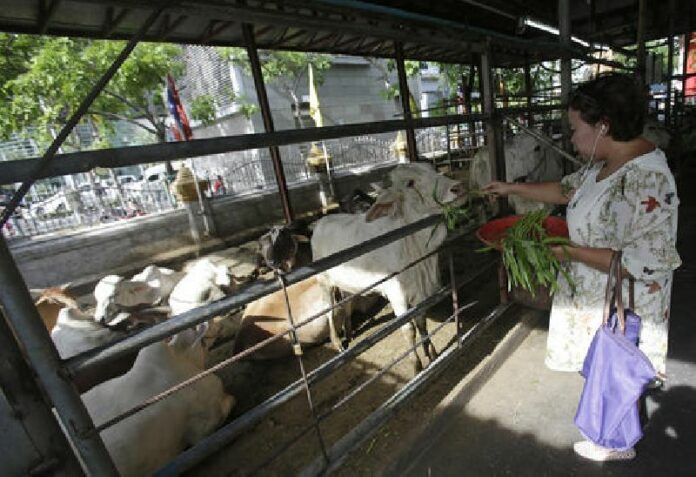
BANGKOK — The scandal surrounding the Tiger Temple, where wildlife officers seized over one hundred big cats this past week, has cast religious sanctuaries for animals in a bad light.
Many conservationists and animal rights activists have believed the temple’s self-appointed mission to shelter tigers is misguided at best and that the tigers were mistreated to ensure their docility. Tiger parts found during the raid buoyed strong suspicions that the temple, run as an admission-charging zoo, engaged in unethical breeding and illegal trafficking of the endangered animals.
The shady findings at the Wat Pha Luang Ta Bua in Kanchanaburi aside, Buddhism and animals have an intrinsic link, loosely derived from Buddhist precepts promoting compassion for all living beings. While tigers are not typical, many temples in Thailand host smaller menageries.
Dogs and Cats
Dogs may outnumber monks at many temples. Unwanted pets and rescued strays almost invariably end up at the local temple, where the moral code of the monks ensures dogs and cats won’t be put down at the pound. The luckier ones will be adopted by a kind-hearted abbot or novice monks, boys who have the energy and enthusiasm to chase the animals.
But most will just survive rather than thrive, especially since their main diet is leftover rice. The stereotype of a temple dog as a skinny, sore-ridden mutt is so ingrained that the Thai phrase for them — ma wat — is slang for a disreputably down-and-out poor person.
Inevitably a crowd of dogs or cats creates crowds of puppies and kittens, straining the temple’s resources and risking the animals’ health and welfare. Sterilization programs attempt to deal with the problem, but Lanna Dog Welfare in northern Thailand takes a holistic approach. The group is training monks in all aspects of hands-on basic canine health care to help the 10 to 50 dogs living at each of the more than 1,600 temples around the city of Chiang Mai.
Birds, Fish and Turtles

Less cuddly animals like birds, fish and turtles lead the lives of second-class citizens. They are found at temples as a result of a Buddhist custom of making merit by freeing animals from captivity. In many cases, the animals serve that purpose over and over, going through cycles of capture and release. The practice, common through much of Asia, is particularly widespread in China, where it is known as fang sheng.
Frail birds, crammed into tiny cages until vendors at the temples sell them to the merit-seekers, either cannot fly out of the reach of their sellers and are recaptured or they reach the wild where they are not fit enough to survive. Fish and turtles are released into temple ponds too crowded to sustain much aquatic life.
The environmental consequences may also be dire; the massive demand endangers the populations of some species, and the disruption of habitats and migratory patterns can spread animal-borne diseases or introduce invasive species.
Tigers and Other Exotic Animals
Larger animals end up at temples in the same manner as dogs and cats — as a refuge for the unwanted or homeless. For all its notoriety, the Tiger Temple’s collection is said to have begun that way, when eight cubs rescued from poachers were brought there for care.
Bears and monkeys are among the wilder animals that might live at temples. But temples are ill-prepared to handle the special needs of such animals, which often are held in appalling conditions. In one famous case, an elephant endured about 20 years chained to a tree, only be killed with a spray of 100 bullets when he tried to escape.
Related stories:
Bottles of Real Tiger Labeled ‘Energy Booster’ Discovered in Tiger Temple
Conservation Rhetoric Falls Apart as 1,000 Magic Tiger Amulets Seized From Monk (Photos)
Lion, Tiger Pelt, More Wildlife Discovered Inside ‘Tiger Temple’
Horrible Discovery in Tiger Temple: Dozens of Dead Tiger Kittens (Photos)
Officers Enter Tiger Temple to Begin Removing Tigers
Another Showdown as Tiger Temple Blocks 1,000 Wildlife Officers
Activist to Sue Over Tiger Temple Zoo Permit

















































